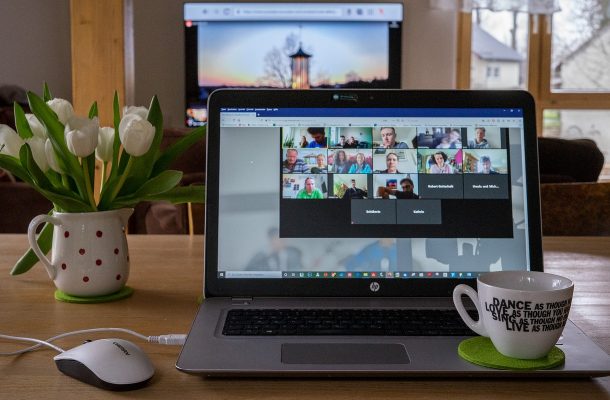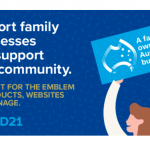The six most annoying things you can do on a ZOOM call

Pet peeves. We all have them. But mention the phrase and add in ‘ZOOM meeting’, and you’re sure to launch into a rant about the myriad of online conferencing frustrations that you have had to endure over the past two years thanks to ZOOM calls becoming the norm of nearly every work day.
“ZOOM fatigue is a very relatable and real phenomena. So many of us had to work from home during the first two years of the pandemic and many are still continuing to do so, even as we move into the third year of COVID life,” Jenny Folley said.
“While we have all had time to come to grips with the world of online meetings and conferencing, we have also become less tolerant of people who don’t seem to respect online meeting etiquette. In fact, it is causing friction and heated exchanges between people – so it is important that everyone makes an effort to avoid annoying people during online meetings.”
Jenny Folley the founder and CEO of coworking and private office spaces, @WORKSPACES has outlined the top six pet peeves that frustrate people during online meetings:
Top six online conferencing pet peeves
- Bad WiFi: broken audio and video imaging is frustrating for all attending a meeting. Lapses in responses due to poor internet connection can really impact the flow of a meeting if people are constantly waiting for a team mate to unfreeze.“Make sure your internet connection is stable and able to cope with online meetings. If other people are chewing up your bandwidth in the household, make arrangements with them to avoid downloads while you are undertaking your meeting – and get better internet,” Folley said.“You wouldn’t pop in and out of a meeting in person, so why allow issues with internet connectivity to pop you in and out of online meetings. It is the same thing.”
- Too many people in call for everyone to talk: this can cause sensory overload as workers try to work out who is trying to talk when all they see is a grid of faces on a screen.“Unlike face to face meetings where people are constantly responding to body language which helps with the natural flow of conversations, online meets can be frustrating and confusing at times,” Folley said.“Put in place a system to enable people to talk in turns. This also avoids people talking over each other or interrupting each other. Some online meeting systems enable you to virtually raise your hand to let people know you would like to say something.
“Use technology to support interactions rather than kill them.”
- Not turning on your screen: like typical meetings that take place in person, people like to connect with a face.“If most people in an online meeting make the effort to turn on their screen and show their face, then it is disconcerting when others don’t,” Folley added.“If you don’t like the state of the room that your computer is in, you can always add a virtual background, but it is very off-putting for others when you don’t turn your screen on at all.”
- Eating food: annoying enough in real life at the cinemas, nobody enjoys listening to wrapper noises and chomping sounds.“Refrain from eating during meetings. It is OK to have a glass of water handy or a cup of tea, but eating is considered a step too far for many people,” Folley said.“No one likes to see people eat and talk at the same time. You would not do it in person, so don’t do it during a virtual meeting.”
- Not paying attention: perhaps inevitable as ZOOM fatigue becomes more and more of a reality, but it is still a very real inconvenience to other team members.“Not paying attention involves, zoning out, catching up on your social media, checking out the online news, or working while on the meeting, typing, texting, and clearly talking to others around the room with the mute button on,” Folley explained.“This type of behaviour is not only considered annoying, it is downright rude. People do notice your sneaky attempts to do other things while in an online meeting. Try and do the right thing.”
- Not putting on the mute button when necessary: at the start of the pandemic, when people were new to ZOOM conferencing, there was a level of novelty and amusement when there were spontaneous and unintended pet and family member cameos and background noises. However as time went on, other forms of unintentional background noises such as the sounds from the neighbour’s construction projects have really begun to grate on the nerves.“The mute button should be used whenever someone is not talking as part of a meeting,” Folley explained.“No one wants to hear your doorbell, TV, dog barking or family arguing. Familiarise yourself with the mute button and use it where ever possible.”
What causes ZOOM fatigue?
Most people are unaware of the cognitive challenges that the body and brain go through to keep focused during online meetings.
“Besides coordinating the conference call, meeting participants also need to create the illusion of eye contact through technology, all the while still aurally processing the words of the speaker. Over time, this can cause ZOOM fatigue,” Folley emphasised.
“It can be debilitatingly exhausting to feel like you’re spending your life online, glued to a screen. This is compounded by the physical constraints of a virtual meeting. You’re quite literally stuck in that one spot in front of the screen for the duration of the meeting.”
Tips to create a better ZOOM meeting for everyone
“Like it or not, there has been a huge shift in the work culture of Australia. Pre-COVID, we used to have to tell our bosses why we wanted to work from home for the day. Now we have to tell them why we want to go to the office,” Folley added.
“As we move past COVID, I think we will continue to work from home at least some of the days. Working from home or from a local neighbourhood based work hub like @WORKSPACES, has many advantages such as cutting down on commuting time and work flexibility. So it would be beneficial to all if we took note of a few things we could do to try and make sitting through video meetings a little less cumbersome.”
- Send an email rather than undertaking an online meeting. Many workers feel that roughly half of the visual online meetings they attend could have been dealt with via email.
- Schedule gaps between online meetings to prevent back-to-back conferences; and schedule short breaks during longer meetings.
- Advocate for yourself. Mental health is important. If you are feeling burned out from too many online calls, let your team members know so that they are aware and can be more considerate of you. You might want to take a mental health day and have a complete restful break.








